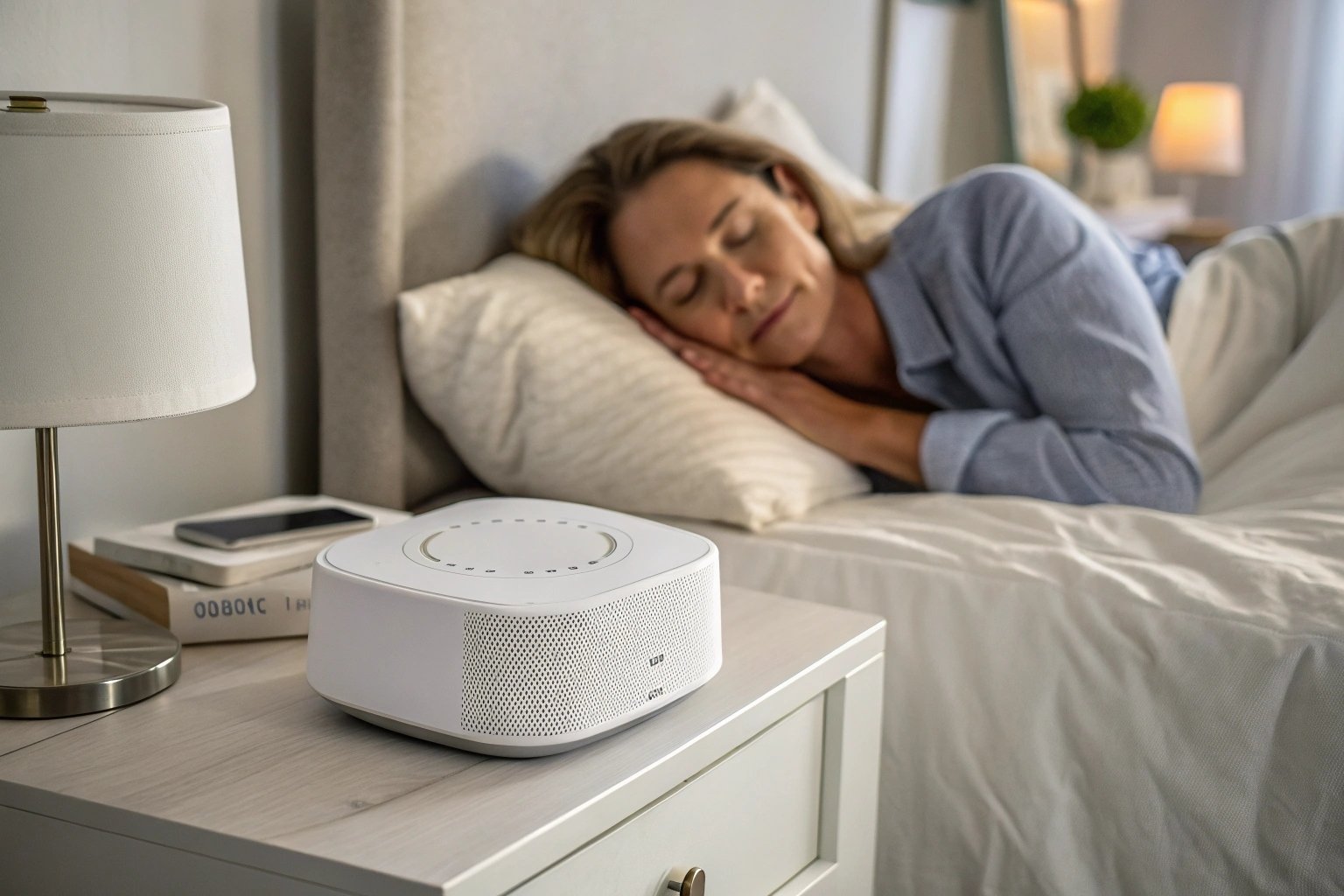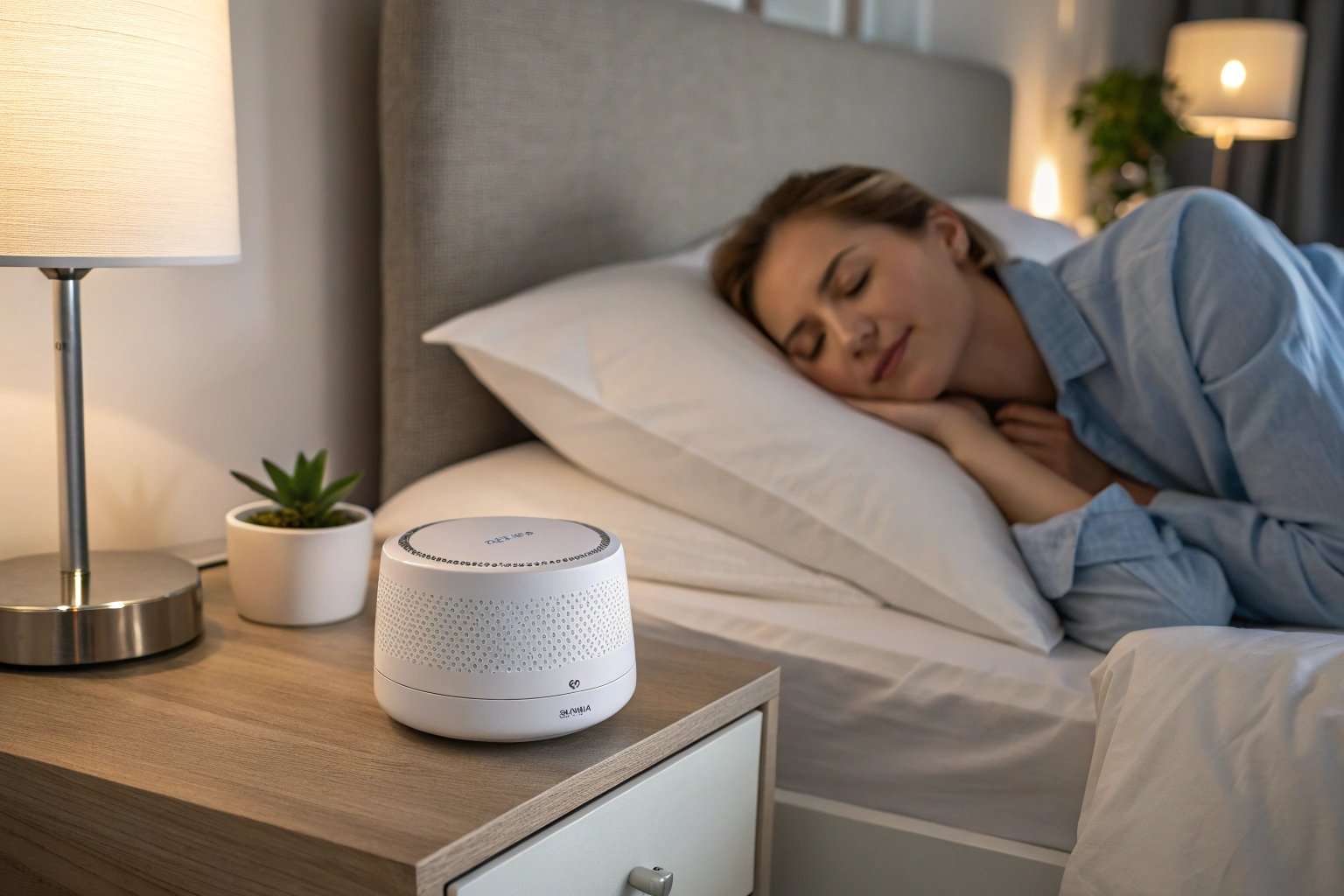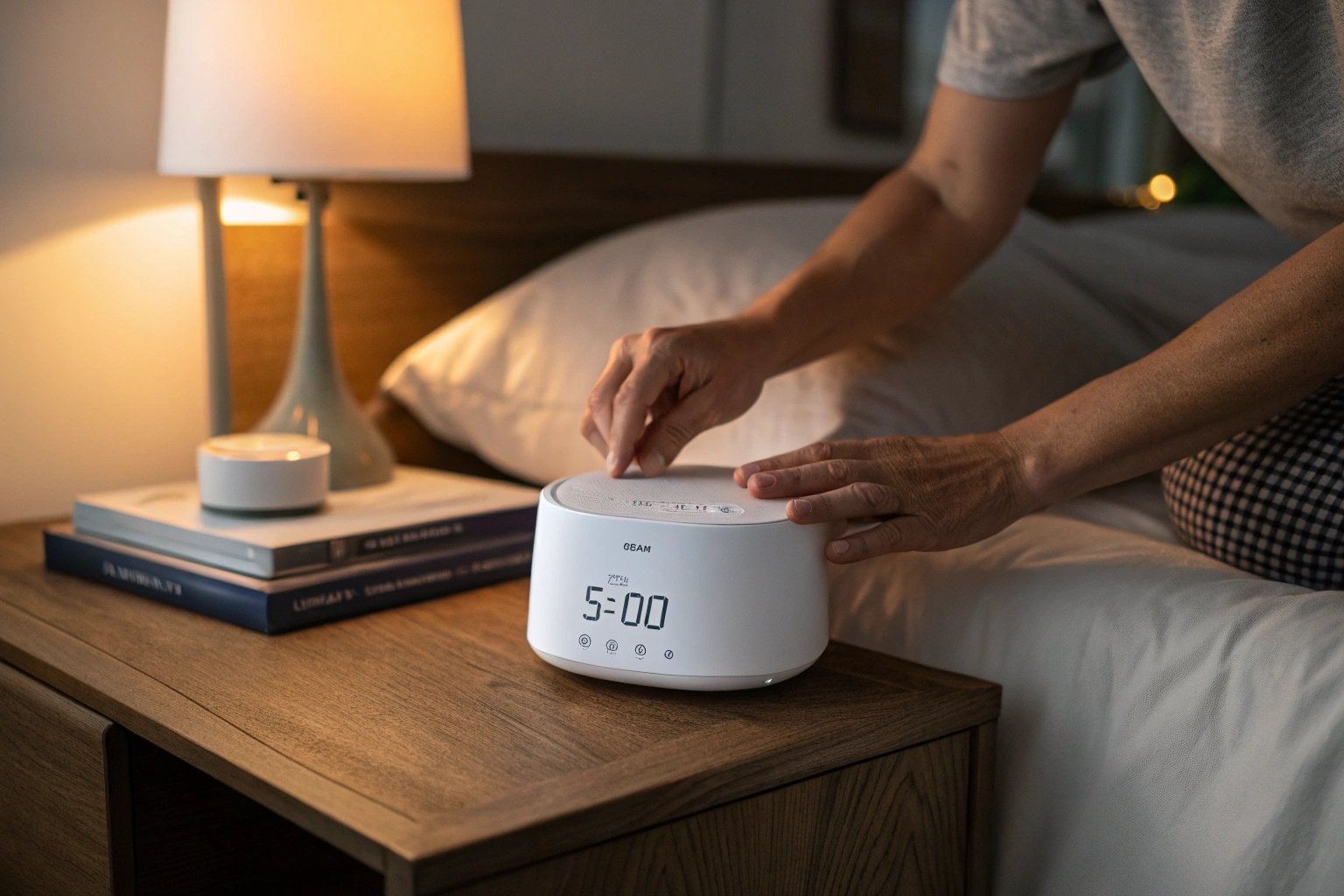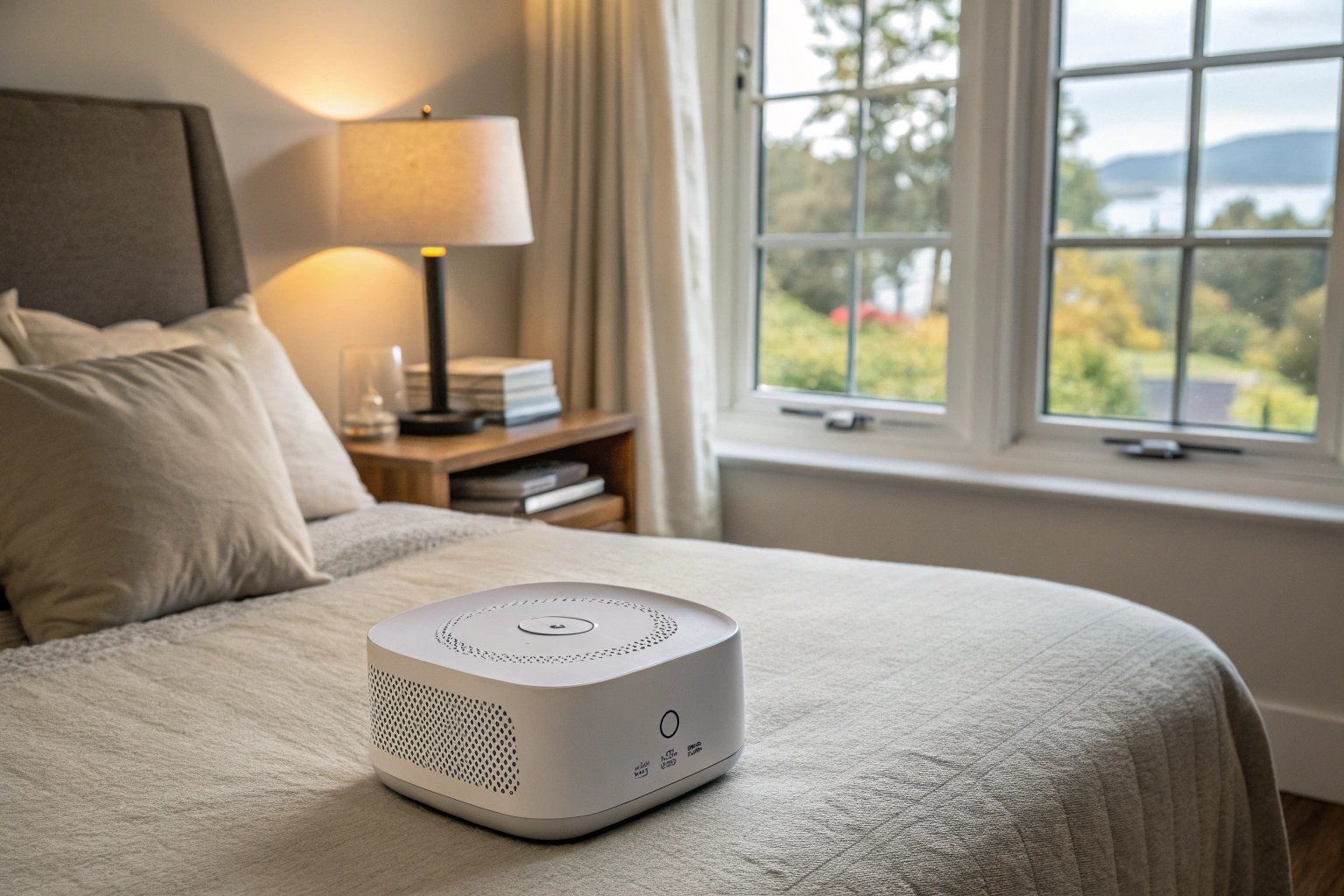In today’s fast-paced world, getting a good night’s sleep can be a challenge. Many people struggle with falling asleep or staying asleep due to noise disruptions, such as traffic, noisy neighbors, or a restless partner. One solution that has gained popularity is the use of white noise machines. These devices provide a consistent sound that can mask disruptive noises and create a more peaceful environment for sleep. But how can you use white noise effectively to improve your sleep? In this article, we’ll explore the best practices for using white noise to help you achieve better rest.

What Is White Noise and How Does It Improve Sleep?

White noise is a steady sound that contains all frequencies in the audible range, played at equal intensity. It's often compared to the sound of a fan, the hum of an air conditioner, or static on a television. White noise works by masking other sounds in your environment that might disrupt your sleep. Whether it's a car passing by, a partner snoring, or the sound of footsteps in the hallway, white noise helps create a consistent background sound that reduces these interruptions.
By masking these disruptive noises, white noise allows your brain to relax and focus on the constant sound, promoting a more restful sleep environment. This is particularly helpful for people who are light sleepers or those living in noisy areas.
What Volume Should You Set for White Noise During Sleep?

One of the most important aspects of using white noise effectively for sleep is setting the right volume. The volume should be loud enough to mask disruptive sounds but not so loud that it becomes a disturbance in itself. Experts recommend keeping the volume at 50-60 decibels, which is similar to the sound of a quiet conversation or the hum of a fan.
It’s important to avoid turning the volume up too high, as this could create ear fatigue or discomfort. If the white noise machine is too loud, it might actually disrupt your sleep rather than enhance it. Experiment with different volume levels to find the one that works best for you.
| Volume Level | Ideal for | Decibel Range |
|---|---|---|
| Soft | Light sleepers or those in quieter environments | 50-55 dB |
| Moderate | Masking moderate background noise | 55-60 dB |
| Loud | Masking loud, irregular sounds (e.g., traffic) | 60-65 dB |
Where Should You Place the White Noise Machine?

The placement of the white noise machine is just as important as the volume. To maximize its effectiveness, place the machine at least 3 feet away from your bed. This allows the sound to spread evenly throughout the room without being too concentrated near your ears.
If you're using the white noise machine to mask sounds from outside the room (such as street noise), place it closer to the window or wall where the noise is most disruptive. In smaller rooms, positioning the machine near the center of the room can ensure an even distribution of sound, making it more effective at masking unwanted noise.
How Long Should You Use White Noise for Sleep?
The ideal length of time for using white noise depends on your personal preferences and sleep routine. Some people prefer to have white noise running all night, while others may find it helpful only to use it as they fall asleep.
If you prefer to have white noise running all night, it’s a good idea to use a machine with a timer function. This allows you to set the white noise machine to turn off after a certain period, such as 30 minutes or 1 hour. This ensures that the sound doesn’t continue after you’ve fallen asleep, saving energy and preventing unnecessary noise exposure.
For those who only need white noise to help them fall asleep, set the machine to run for 30 minutes to 1 hour as you drift off. Over time, you can experiment with different durations to determine what works best for you.
Should You Use a White Noise Machine for Naps?
White noise can be just as effective for short naps as it is for full nights of sleep. Napping during the day often comes with its own set of challenges, such as ambient light, noise from family or coworkers, or the general busyness of your environment. White noise helps block out these distractions, allowing you to relax and fall into a deeper nap.
To use white noise for naps, follow the same best practices as you would for nighttime sleep: keep the volume at a comfortable level, place the machine a few feet away, and consider using a timer if you don’t want the noise to continue after you wake up. For shorter naps (less than an hour), the white noise can be particularly effective in helping you relax quickly and get the rest you need.
Conclusion: How to Use White Noise for Better Sleep
White noise is a simple, yet powerful tool that can help improve sleep quality by masking disruptive sounds and creating a more peaceful environment. By adjusting the volume, positioning the machine properly, and setting a timer, you can optimize your sleep experience and reduce the impact of external noise.
Whether you're using it to fall asleep, stay asleep, or improve your napping experience, white noise can create a soothing backdrop that promotes relaxation. By incorporating these best practices into your sleep routine, you can enjoy a more restful, uninterrupted night’s sleep and wake up feeling refreshed and energized.

